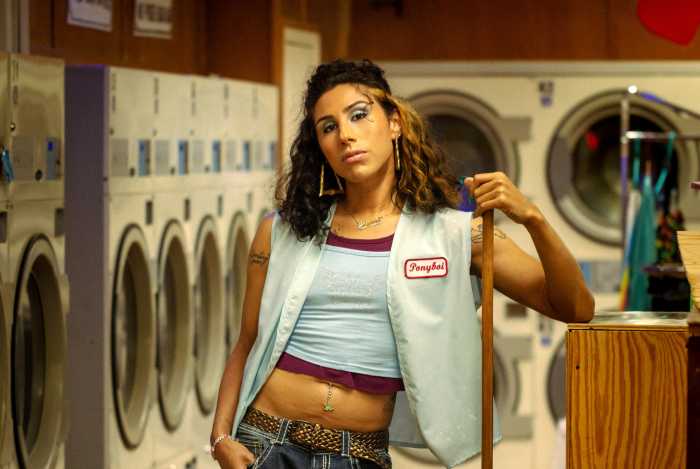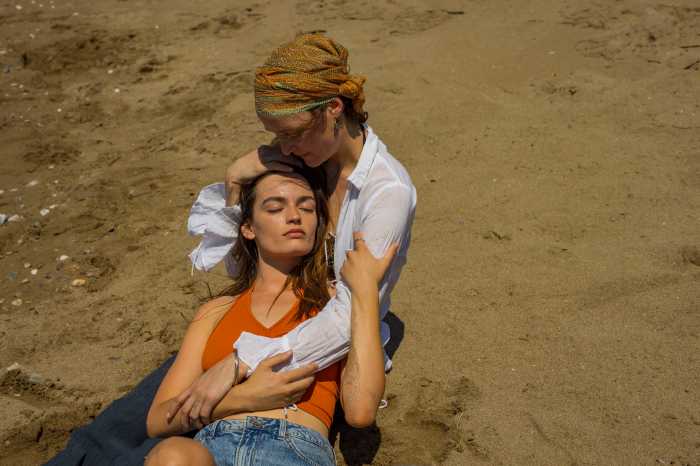BY GARY M. KRAMER
“The Disappearance of My Mother” is out gay filmmaker Beniamino Barrese’s sensitive portrait of his mother, Benedetta Barzini, an iconic fashion model who now disdains the camera. When Barzini was hired by Diana Vreeland in the 1960s, her career took off and she hobnobbed with Andy Warhol and other luminaries of the day. (Lauren Hutton drops by for a visit with “Benny,” Barzini’s nickname, in the film). But Marxist and feminist influences on the model made her question the nature of beauty, commerce, and how women are seen and treated in fashion and society generally.
Barzini still participates in the occasional fashion show, but her son’s film shows how she is planning to escape and leave everything and everyone behind — and is a metaphor for the day when she will leave him behind. Barrese lovingly captures his mother’s elusive nature in this highly personal documentary.
Via WhatsApp from Italy, Barrese acknowledged that his film may not have universal appeal.
“I was trying to make a film about my mom and make a super objective, observational, almost fiction film about her,” he explained. The more intimate “The Disappearance of My Mother” was, he reasoned, the more viewers would form a connection with Benedetta and find “an entrance” into a relationship with someone you love and must let go of.
But Benedetta herself says of her modeling days, “It isn’t really me captured in a photograph” — she is pretending to be someone for the camera.
That concept percolates throughout the documentary, and Barrese acknowledged, “I think she’s totally right. I tried to capture an approximation of my perception of her. I had to choose my idea of her. When we relate to others, we show portions of ourselves and have masks. We have a public face — meaning that we only behave according to what we know. It can be profound but limited. Benedetta says this to empower herself. She told me, ‘This woman in your film is cool, but it’s not me.’”
Barrese added, “This film made me scrutinize what it means to give your image away and have it as static forever while you are changing — and that’s why it’s so difficult to be captured in a photograph or on film.”
The elusiveness of the “real” Benny often frustrated the filmmaker, who tried to replicate his vision of his mother.
“I did my best,” he said, “but I didn’t manage it. I made her look sad and angry and depressed for the purpose of telling the story. She’s more lighthearted in real life. She’s right, images are a lie — they take something and put it into a frame. Reality is much more layered.”
Barrese talked about the unique bond he has with his mother.
“She tells me that I’m the only one of her kids who looks at her as a person, not as a mother, and that she looks at me as a person and not a son,” he said. “So, we didn’t fall into the stereotypical roles.”
The collaborative nature of filming allowed Benedetta to have “more of a say in what happens,” Barrese said. “Our tension was real, and much worse that what you see in the film.”
Despite any conflicts, the director emphasized, he had his mother’s support for the project.
“She knew this was my goal, and she helped me realize it, Barrese said. “I was a little lost. She knew I wanted to find my way back to filmmaking, so this was my attempt to do something of my own.”
He then qualified that by admitting, “But I had to mislead her about what I was doing — she thought the film was about something else because I kept the ‘disappearance’ from her.”
At times, Barrese is seen as intrusive in the documentary. When Hutton visits Benedetta, Barrese is asked not to record their reunion. Scenes like these, he said, give viewers a sense of the power struggle he had with his mother over control of the film. (Some of the more amusing moments have Benedetta “directing” her son.)
Barrese explained that his interruption was not what it seems to be on film.
“I had to be intrusive and obsessive more than I actually was,” he said. “You have to have respect for whoever is involved. With Lauren Hutton, they did not let me shoot — it looks like I’m disturbing them. I made that meeting happen, and they both knew I was going to film it. That’s why they were meeting! Our agreement was that I had to film because I had arranged their meeting. When mom was saying ‘no,’ she was breaking the deal we had. I’m intrusive to get the truth in front of me.”
In saying he was “obsessive more than I actually was,” Barrese explained he meant that the obsessiveness was exaggerated for purposes of telling the story.
“I’ve been drawn to her because I’ve been attracted to the mystery that surrounds her life and her past and the many contrasts she has, he said of Benedetta. “My interest in a subject is proportional to how much I love the subject. I have enormous love for her. She’s so beautiful and charismatic.”
And, indeed, squabbles or not, the love between mother and son is evident in every frame of “The Disappearance of My Mother.”
THE DISAPPEARANCE OF MY MOTHER | Directed by Beniamino Barrese | In English and Italian with English subtitles | Kino Lorber Opens Dec. 6 | Quad Cinema, 34 W. 13th St.; quadcinema.com



































